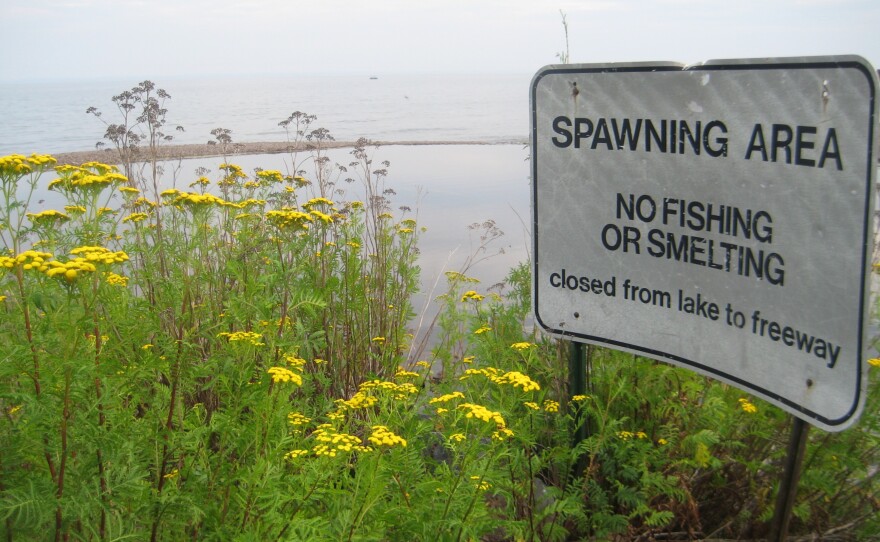We kick off our week-long series In Warm Water: Fish and the Changing Great Lakes with a look at Lake Superior.
It has long been the coldest and most pristine Great Lake. Its frigid waters have helped defend it from some invasive species that have plagued the other Great Lakes. But Lake Superior’s future could look radically different. Warming water and decreasing ice are threatening the habitat of some of the lake’s most iconic fish.
On a fishing trawler turned research vessel in the Duluth harbor, University of Minnesota-Duluth scientists and students head out into the open waters of Lake Superior.
About 20 minutes off shore, the captain kills the engine.
Physicist Jay Austin is leading this expedition. He is an expert from the University of Minnesota Duluth’s Large Lakes Observatory.
His team is out here to gather data about the lake’s condition. Researchers will submerge a special instrument called a CTD. It looks like a robot – it’s rigged with electronic sensors and bottles to sample the water.
“The lids on those bottles will slam shut at various depths so we can bring it up without mixing it with the water above it,” Austin says.
They lower the CTD into the lake, suspended on thick chains.
Turns out lakes are a great way to measure climate change.
Austin analyzed more than 100 years of Lake Superior water readings. The numbers show the average summer water temperature has increased by more than four degrees since the 1980s. That’s even faster than the air temperature is warming.
"Four degrees doesn't sound like a lot, but when you start looking at how narrow the ranges of temperature for fish are where they find it a habitable lake, four degrees suddenly looks like an awful lot."
“Four degrees doesn’t sound like a lot, but when you start looking at how narrow the ranges of temperature for fish are where they find it a habitable lake, four degrees suddenly looks like an awful lot,” he says.
More than 78 species of fish live in Lake Superior. Many of them – like siscowet lake trout - need cold water to survive.
For now at least, Lake Superior is still very cold much of the year. But scientists want to know what might happen to native fish if the water continues to heat up.
Austin’s research shows shrinking ice cover in winter is warming Lake Superior faster than previously thought. That’s because without ice, there is nothing to reflect the sun’s thermal rays.
It’s not just the lake
Warming is already taking a toll on rivers and streams that feed into Lake Superior, too.
Signs of climate change are visible at the French River where a sandbar blocks the mouth of the tributary.
Don Schreiner is with the Minnesota Department of Natural Resources. As the air and water warm, he says, Lake Superior’s tributaries are evaporating at a faster rate.
Lower water levels make life difficult for migratory fish. They depend on rivers to spawn.
“Right now it would be very difficult for a fish to get into this river unless it can jump that mouth,” says Schreiner.
Some invasives like it hot
He says an even bigger concern is the potential spread of invasive species attracted by warming waters.
The fear is that invasive species could eventually gain the upper hand and crowd native fish out.
In the woods a few miles away, fisherman Steve Dahl works in his backyard fish shack. He’s president of the North Shore Commercial Fishing Association.
He worries new invasive species could devastate his business.
“The invasives almost are a greater concern than anything because that could wipe us out in three years if the wrong thing gets in here,” he says.
Forecasts suggest climate change could make Lake Superior more productive for native fish in the short term. But an increase in invasive species could ultimately offset any gains.
Tomorrow, we’ll hear how warmer temperatures could mean leaner meals for fish in the Great Lakes.





